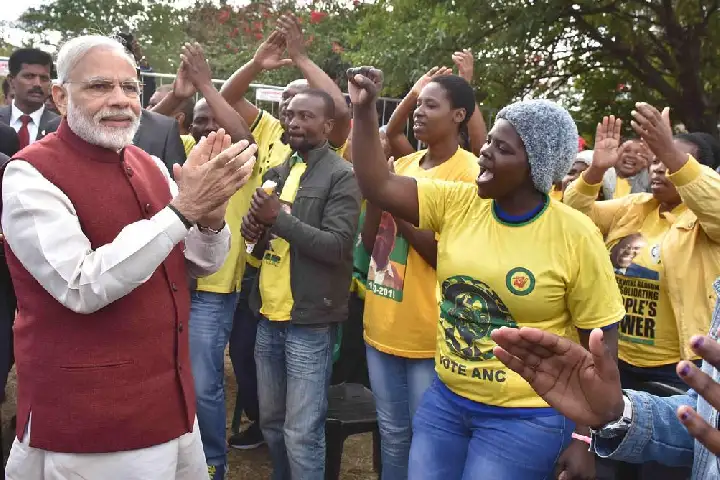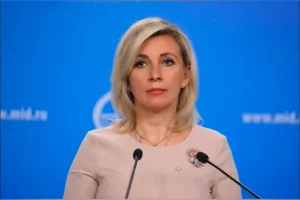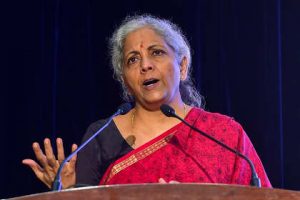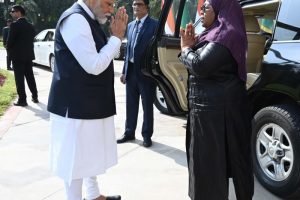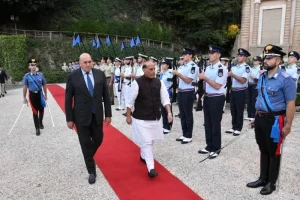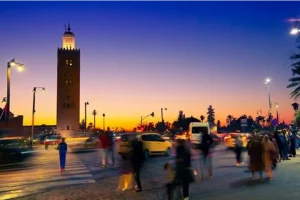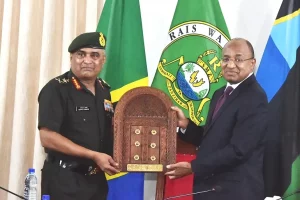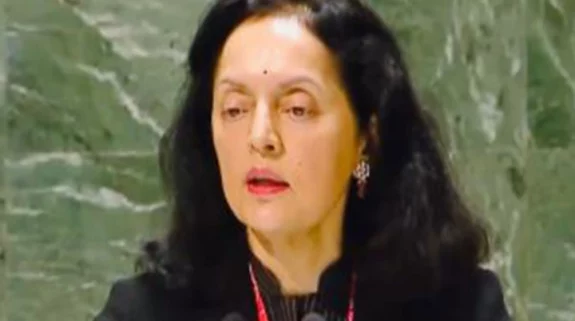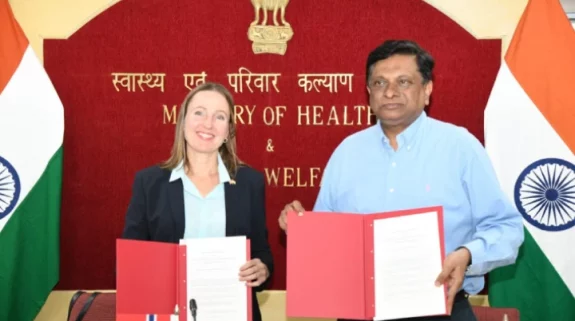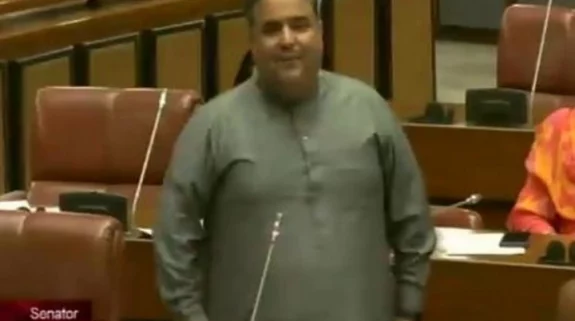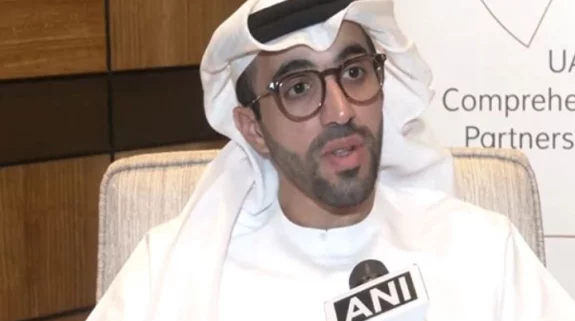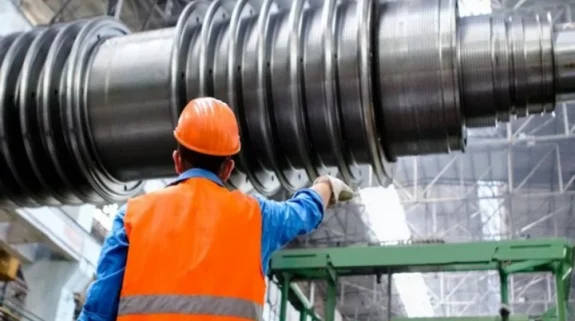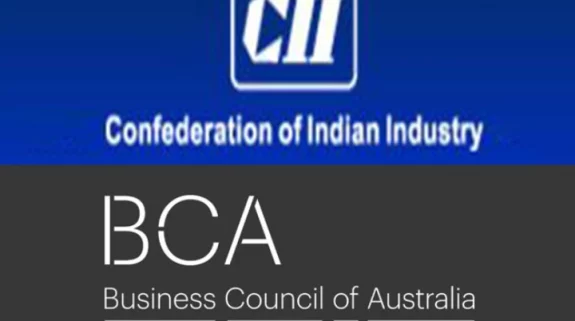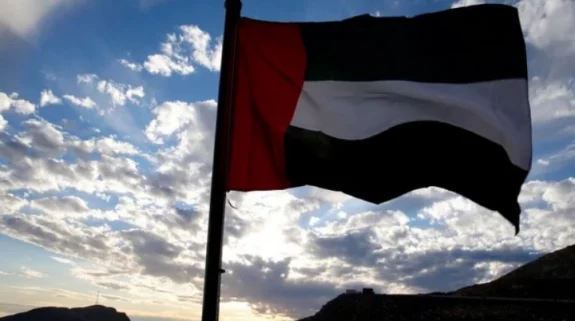The African Union’s entry into G20 heralds a new chapter of India’s increasing footprint in the African continent. The bloc of 55 countries will not only enjoy a place at the diplomatic high table now, it will also trigger a flurry of development activities, with several Indian firms investing in individual and collective African development programmes.
Besides commercial consequences, AU’s permanent G20 membership will be crucial for a just, equitable, more inclusive and representative global architecture and governance for the one billion odd Africans because India has put emphasis on “human-centric” development of the developing world.
The idea was floated in June this year, when Prime Minister Narendra Modi wrote to G20 leaders to propose that the African Union be given “full membership at the upcoming Delhi Summit of G20, as requested by them”. It’s been reported that the idea germinated after the ‘Voice of the Global South’ summit in January this year, in which most of the African continent’s 55 countries had participated. The discussions were carried forward in Addis Ababa in Ethiopia, which houses the headquarters of the African Union. So far there was only one country from the entire African continent in the G20 – South Africa.
The AU’s entry into G20 is a reflection of the intensity of New Delhi’s engagement with Africa, which got a fillip when more than 40 Heads of State and Government came for the 3rd India-Africa Forum Summit in October 2015.
Under its Africa Outreach initiative, India has had visits to all African countries at ministerial level. PM Modi himself has visited at least 10 countries in Africa in the last nine years.
With this move of including the African Union in the G20 grouping, India has pitched itself as a leader of the developing and underdeveloped countries. This is also in sync with India’s aspiration for permanent membership of the UNSC, for which Delhi is keen to garner support from Africa that has 55 votes.
#AIEF to promote trade,business&investment btw MSME&P2P sectors-Africa,India&other participating countries,AIEF& AU inked MOU in Mar’23. In addition,AIEF was the 1st Indian https://t.co/KeC78oqDBQ to receive explicit recognition fr the AU in a summit declaration in2020 pic.twitter.com/EbiA6JeUEb
— Africa India Economic Foundation (AIEF) (@AfricaIndiaAIEF) September 11, 2023
India in Africa
Under Agenda 2063, India is a reliable and close partner in Africa’s journey to become a global powerhouse of the future. To expedite its presence in Africa, India opened 16 new embassies in Africa in recent years.
India has started power projects in Sudan, Burundi, and Rwanda, and sugar plants in Ethiopia and Malawi. It has established technology parks in Mozambique, Ivory Coast, and Eswatini. Campuses have been established by Indian universities in Tanzania and Uganda.
India has also established defence academies and colleges in Nigeria, Ethiopia, and Tanzania. Besides, to bridge the digital divide in Africa, new Delhi has provided over fifteen thousand scholarships in tele-education and tele-medicine.
Indian tycoon Gopichand Hinduja pledges substantial investment in Nigeria’s auto industry during a meeting with President Tinubu in New Delhi.https://t.co/RfZin8V0Ad
— Business Insider Africa (@BusInsiderSSA) September 7, 2023
Presently, India is Africa’s fourth-largest trading partner and the fifth-largest investor.
India and Africa have prioritised key sectors to boost bilateral trade and address common challenges. In the food and agriculture sector, both regions focus on food security, promoting agricultural technology and trade. Energy security is achieved through collaborations in the oil and gas sector, with Indian investments in African oil fields. Mining and minerals attract Indian investments, creating value in Africa.
As per latest data from the Ministry of Commerce and Industry, Government of India, bilateral trade between India and Africa stood at approximately $98 billion in 2022-23, a significant increase from $7 billion in 2001.
Indian companies have shown keen interest in investing across various sectors in Africa, including infrastructure, energy, agriculture, healthcare, and information technology. Investment opportunities in Africa have been primarily driven by the continent’s emerging middle class, rising consumer demand, and improving business environment. India is providing significant development cooperation to Africa. This includes providing financial assistance, technical assistance, and capacity building.
According to Confederation of Indian Industry (CII), following are key sectors where India is collaborating with African countries:
Agriculture and Allied Sectors: Prospects for collaboration in this segment remain promising as both regions continue to invest in agricultural development, technology transfer, and market linkages, the trade is expected to flourish, creating new opportunities for farmers, agribusinesses, and consumers in both India and Africa.
Minerals and Mining Sector: India has been a significant importer of minerals from Africa, while African countries have relied on India’s expertise in mining technology and investment. The total trade in the mining and mineral sector between India and Africa since 2001 stands at $43.13 billion, with an export-import proportion of 22.7% and 77.3%, making India a net importer in this sector.
Drugs & Pharmaceuticals: The consistent growth in trade reflects the increasing demand for medicines and healthcare products in Africa, as well as India’s capacity to cater to these needs. In the year 2020-21, the trade volume soared to an all-time high of $3.8 billion. Analysing trade composition makes it evident that medicaments, including pharmaceutical products for both retail and non-retail sale, constitute the largest share, accounting for 85.34%.
Indian Pharmaceutical investment in Ethiopia in right direction says leading Ethiopian newspaper – The Ethiopian Herald @MEAIndia @dgftindia @Pharmexcil @ficci_india @IPC_Ghaziabad @_AfricanUnion @AU_HHS @AfricaCDC @PressEthio pic.twitter.com/CGr1ErTtdq
— India in Ethiopia (@IndiaInEthiopia) March 30, 2022
Manufacturing: Trade between India and Africa in the manufacturing sector has witnessed substantial growth strengthening economic ties between the two regions. India has been a net importer in this segment, reflecting the demand for various manufactured goods in the Indian market. This creates avenues for African countries to tap into India’s growing market by supplying goods that cater to India’s specific requirements and preferences.
Sustainability & Green Energy: Green energy and renewable energy have become central themes in the India-Africa bilateral trade. India, with its robust renewable energy sector, including solar, wind, and hydroelectric power, has the capacity to support Africa’s transition to green and sustainable energy sources.
Electrical Machinery and Equipment: This segment consists of two main components, each contributing to the bilateral trade dynamics. Nuclear reactors, boilers, machinery, and mechanical appliances, along with their parts, represents 60% of the total in this segment. Electrical machinery and equipment, including their parts, constitute the remaining 40% of the trade. This reflects the increasing demand for modernising electrical infrastructure and supporting various industries in Africa.
Transportation: Key components India-Africa transportation sector trade includes railway or tramway locomotives, rolling stock, and parts thereof, railway or tramway track fixtures and fittings and parts thereof, mechanical components, vehicles other than railway or tramway rolling stock and parts and accessories thereof, aircraft, spacecraft, and parts thereof, and ships, boats, and floating structures. Each component plays a crucial role in shaping the trade patterns and facilitating the exchange of goods between India and Africa.
AU Specialised Technical Committee on Transport, Transcontinental & Interregional Infrastructure, & Energy kicks off today to provide policy & strategic guidance for continental integration, infrastructure,transport & energy.
12-15 SEPT: 9.30AM EAT
🟢LIVE https://t.co/gYt2ENMzQa pic.twitter.com/OXK9wSLjmQ— African Union (@_AfricanUnion) September 12, 2023
The African Continental Free Trade Agreement (AfCFTA): It came into effect in January 2021, holds immense potential for both India and Africa. India is poised to play a guiding role in the strengthening of AfCFTA through renewable energy and transformative green industrialization, agriculture, food and nutrition security. Additionally, India would be able to assist in strengthening finance institutions, participating in multilateral forums, and contributing to a global green new deal that enhances the effectiveness of AfCFTA.
The AfCFTA presents a substantial opportunity for Indian companies to expand their market reach and diversify their investment portfolios in Africa. Indian businesses can capitalise on the preferential access to the African market and participate in regional value chains, unlocking immense growth potential.
Chinese “capital-centric” versus India’s “human-centric” model
China recently invested in the African continent lavishly, but it has reportedly generated a lot of discontentment in Africans because of Chinese style of investment and implementing development projects. Prime reasons of this are as following:
Most of the Chinese financing to Africa is associated with securing the continent’s natural resources. Also called the Angola Model, that is, providing low interest loans to nations who rely on commodities, such as oil or mineral resources, as collateral.
Chinese construction companies bring in Chinese workers and thus the promise of generating employment for Africans remains unfulfilled. Rather, it leads to local unrest.
Preparing themselves for easy entry, acceptance and invasion and exploitation of Africa’s resources? How much infrastructural investment have they done in Africa when compared to China?
— Muriel Gill (@MurielG24116060) September 7, 2023
China also deploys its armed forces in the name of safeguarding the development projects. The number of Chinese troops hence has swelled considerably in recent years. Even some African governments have resented it.
In contrast to huge infrastructural loans sanctioned by Chinese President Xi Jinping, the Indian Prime Minister will donate 200 cows in a rural part of Uganda as part of Paul Kagame’s social mobility project. India has used a bottom up approach which will be beneficial for the relationship.
The Chinese model enables the elites and the well-connected in Africa to make a lot of money and flourish. However, India is trying to engage with the African nations on an individual basis, recognising their local problems and accordingly plan development projects. India is committed to upgrade the level of the African poor.
India also decided to develop people-to-people relationships like training doctors and teachers, and other professionals to generate bonhomie with African people and help them tackle their problems themselves.
ALSO READ: why-egypt-is-key-to-indias-plans-for-middle-east-and-africa






